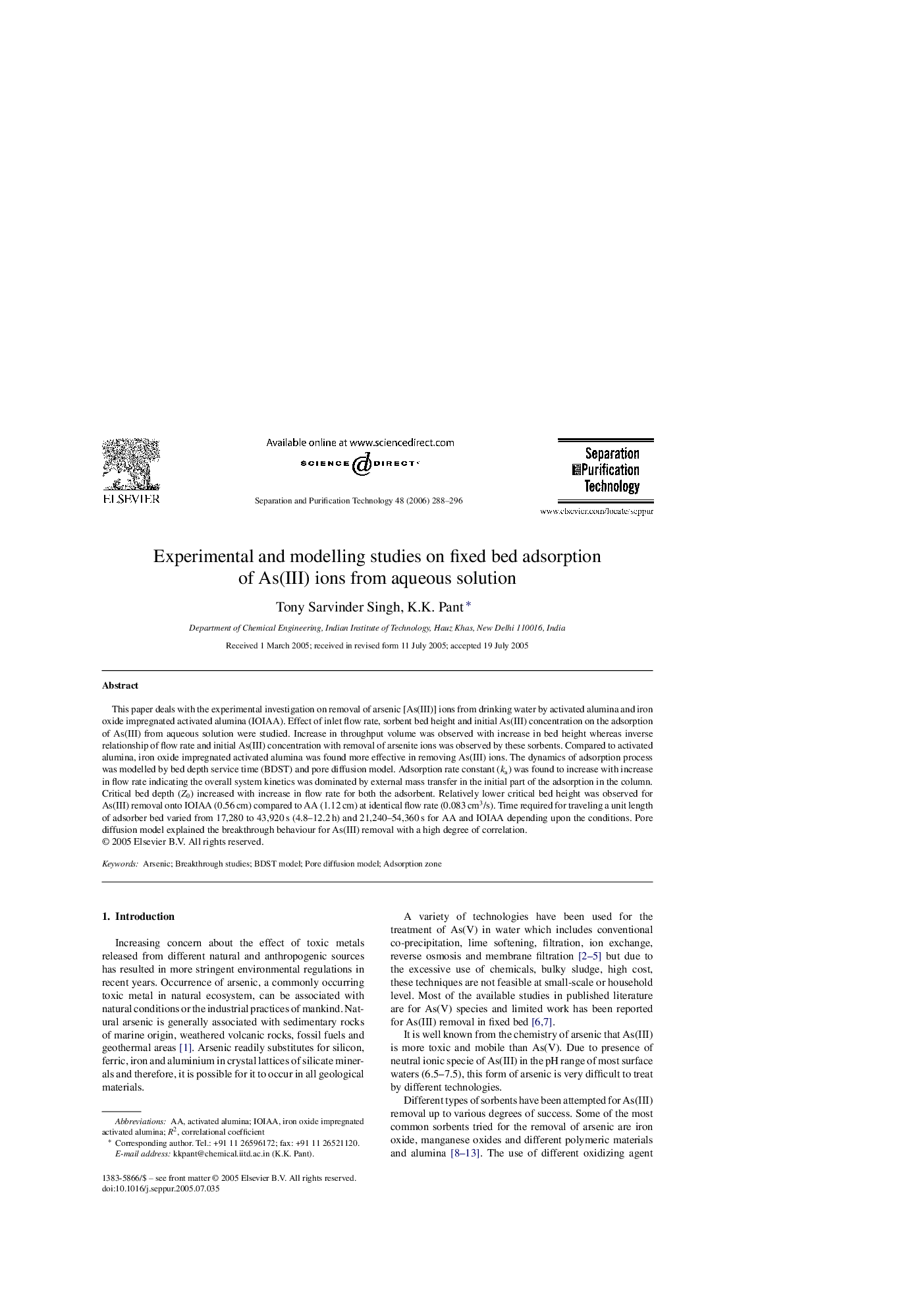| Article ID | Journal | Published Year | Pages | File Type |
|---|---|---|---|---|
| 644361 | Separation and Purification Technology | 2006 | 9 Pages |
This paper deals with the experimental investigation on removal of arsenic [As(III)] ions from drinking water by activated alumina and iron oxide impregnated activated alumina (IOIAA). Effect of inlet flow rate, sorbent bed height and initial As(III) concentration on the adsorption of As(III) from aqueous solution were studied. Increase in throughput volume was observed with increase in bed height whereas inverse relationship of flow rate and initial As(III) concentration with removal of arsenite ions was observed by these sorbents. Compared to activated alumina, iron oxide impregnated activated alumina was found more effective in removing As(III) ions. The dynamics of adsorption process was modelled by bed depth service time (BDST) and pore diffusion model. Adsorption rate constant (ka) was found to increase with increase in flow rate indicating the overall system kinetics was dominated by external mass transfer in the initial part of the adsorption in the column. Critical bed depth (Z0) increased with increase in flow rate for both the adsorbent. Relatively lower critical bed height was observed for As(III) removal onto IOIAA (0.56 cm) compared to AA (1.12 cm) at identical flow rate (0.083 cm3/s). Time required for traveling a unit length of adsorber bed varied from 17,280 to 43,920 s (4.8–12.2 h) and 21,240–54,360 s for AA and IOIAA depending upon the conditions. Pore diffusion model explained the breakthrough behaviour for As(III) removal with a high degree of correlation.
